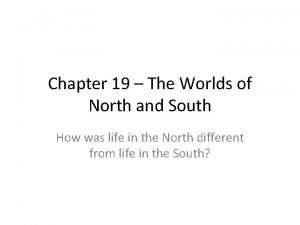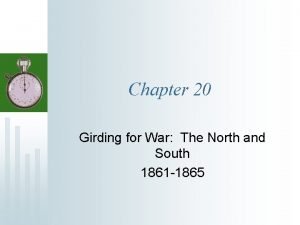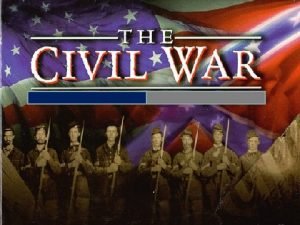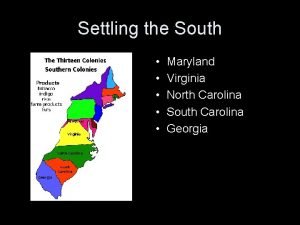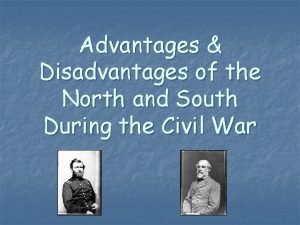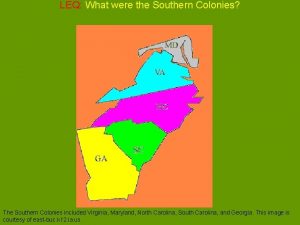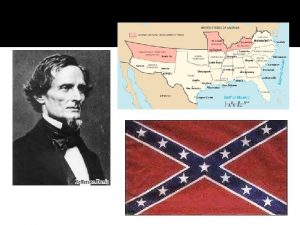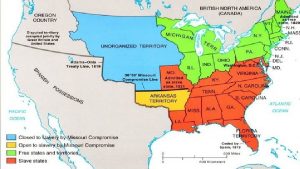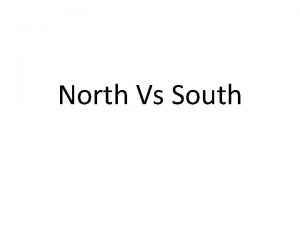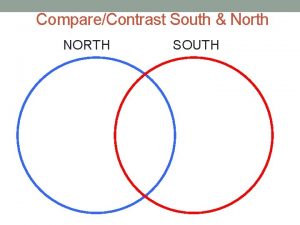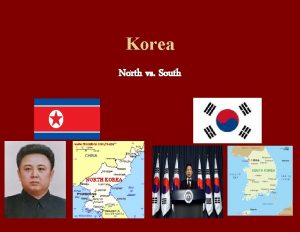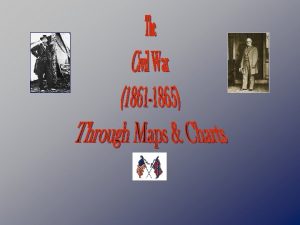Chapter 14 North and South LESSON 1 THE











- Slides: 11

Chapter 14 North and South LESSON 1: THE INDUSTRIAL NORTH

Three Phases of Industrialization Before industrialization: workers made goods one item at a time Industrialization Phase One changed all of that Phase Two Phase Three • Employers divided jobs • Entrepreneurs built • Workers used into smaller steps factories to bring machines to complete • Each worker would specialized workers tasks specialize in one step together • Machines worked and become an expert • Allowed products to faster than any human move quickly from one • Workers now tended worker to the next machines instead of weaving

Changing Transportation Between 1800 and 1850, thousands of miles of roads and canals were built 1840 s canals had to be widened and deepened for steamboats By 1860, about 3, 000 steamboats traveled throughout the country This encouraged the growth of cities Sailing technology improved during the 1840 s Clipper ships: could sail 300 miles per day, featured tall sails and sleek hulls, as fast as steamboats, got their name because they “clipped” time from long journeys Before clippers: NY to Great Britain 21 to 28 days After clippers: NY to Great Britain half that

The Railroads Arrive Horses pulled early trains 1829: first steam-powered passenger train began running in Britain By 1840: steam-powered locomotives were pulling trains in the U. S. 1840: U. S. had almost 3, 000 miles of railroad track (Page 379) By 1860 there was about 31, 000 miles mainly in the North and Midwest connecting many cities

Partner Respons e What section used rail more?

Moving Goods and People Improvements in transportation provided benefits to both businesses and consumers Farmers The and manufacturers could move goods faster and cheaper price of goods lowered Fast, affordable train travel brought people to the Midwest and states like Ohio, Indiana, and Illinois grew in population

Progress with Problems SS Central America: 270 foot steamer, NY to Panama, September 1857 the steamer was carrying a full load of people and gold when it hit a hurricane, ship sank of the coast of Carolinas, hundreds drowned Great Train Wreck of 1856: two trains slammed head-on, about 60 people died, and more than 100 were injured, this caused newspapers to demand railroad companies to improve their methods and safety Do we demand safety today? Tell your partner…

Communications Breakthrough Telegraph – device that used electric signals to send messages Allowed for information to be communicated in minutes rather than days Allowed for businesses to become more efficient with production and shipping Telegraph operators sent messages quickly by using Morse Code – system of dots and dashes that represent the alphabet By 1852, there were about 23, 000 miles of telegraph lines in the U. S.

Advancements in Agriculture New machines and the ease of access to railroads allowed farmers to plant more acres with cash crops Midwestern farmers grew wheat and shipped it east by train and canals NE and Middle Atlantic farmers increased their production of fruits and vegetables Agriculture in the North was growing, but industry was growing faster

Partners -- Fill out using pages 376 -381 Inventor Elias Howe Robert Fulton Peter Cooper Samuel Morse John Deere Cyrus Mc. Cormick Invention Purpose

Chapter 14 North and South LESSON 1: THE INDUSTRIAL NORTH
 Chapter 14 north and south
Chapter 14 north and south The worlds of north and south answer key
The worlds of north and south answer key Chapter 20 girding for war the north and the south
Chapter 20 girding for war the north and the south Anaconda plan
Anaconda plan Lines that run from north to south but measure is and west
Lines that run from north to south but measure is and west Maryland, virginia, north carolina, south carolina, georgia
Maryland, virginia, north carolina, south carolina, georgia North and south advantages and disadvantages
North and south advantages and disadvantages North and south strengths and weaknesses chart
North and south strengths and weaknesses chart Swana
Swana The angular distance of a place east or west
The angular distance of a place east or west North and south states civil war
North and south states civil war What is this image
What is this image

